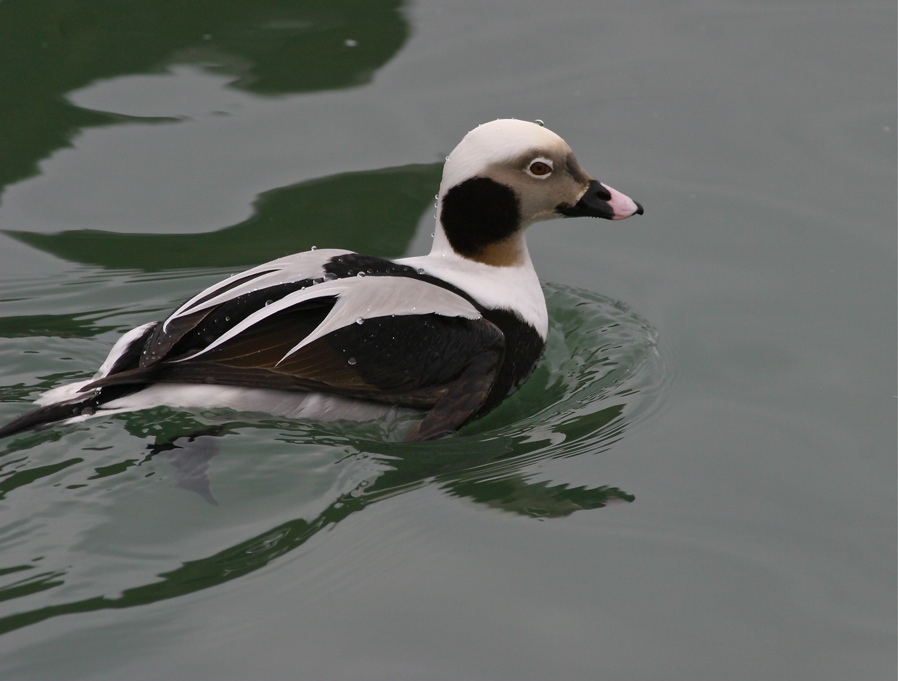

A male long-tailed duck-- wearing his winter plumage -- in the open water of the Coatsworth Cut today.
If you have seasonal affective disorder, I sure hope you have a sunlamp! Not a scintilla of sunshine in our neck of the world today. Looked in several locations for a glimpse of colour other than the browns of sleeping vegetation and the dull greys of the sky, lake and most everything else today.
Best I could do this afternoon was to get a shot of the extremely lovely long-tailed duck, Clangula hyemalis, wearing his winter colours. If you look closely, you’ll see that there’s a smidgen of pink in his bill. This species of diving duck has a completely different breeding plumage — strangely, it’s much less flashy and much more like the breeding female’s.
Long-tails are actually Arctic ducks that spend much of the winter “down south,” which for them is the Great Lakes. They’re also found along the Atlantic coast in winter.
This species used to go by the common name oldsquaw, which referred to this sea duck’s habit of continuously chattering. Their lovely song — the oow-ooodle-oooh I mentioned in yesterday’s post — can be heard up to a mile away.
Another interesting thing about long-tails is their ability to dive extremely deep. My Smithsonian handbook tells me that these ducks have been caught in fishermen’s nets at a depth of 200 feet. Athough many are lost in these fishermen’s nets, there is no conservation concern: long-tails are considered to be abundant — their numbers are counted in the millions.
In the late spring, our beautiful long-tails will return home, back to their tundra in the Arctic, where they will nest and breed in freshwater pools in the tundra. I always miss them when they go.
© BCP 2010


no comments